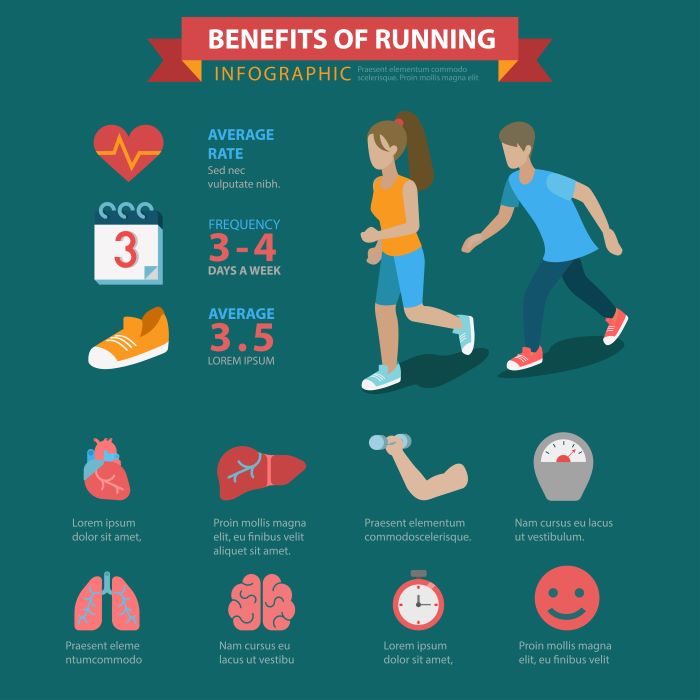For many aspiring runners, the idea of transitioning from a sedentary lifestyle to completing a half marathon can seem daunting. However, with the right training plan, it becomes not only achievable but also an incredibly rewarding journey. A couch to half marathon training plan is specifically designed to guide beginners through a structured progression, allowing them to build endurance, strength, and confidence over time.
Typically, these plans span from 10 to 16 weeks and focus on gradually increasing both the distance and frequency of runs. Here are some fundamental elements:
- Run/Walk Intervals: Most plans start with a combination of running and walking, allowing your body to adapt to the new demands.
- Rest Days: Incorporating rest days is crucial to prevent injury and promote recovery, ensuring that you remain motivated and healthy throughout your training.
- Cross-Training: Engaging in other forms of exercise, such as cycling or swimming, can enhance your overall fitness and alleviate some of the physical stress from running.
By understanding the components of a couch to half marathon training plan, you can tailor your approach to fit your personal fitness level and lifestyle. Ready to take the first step? Visit our website to learn more and get started today! Click here.
Essential Components of a Successful Training Plan

A successful training plan for transitioning from couch to half marathon involves several essential components that work together to prepare you physically and mentally for race day. Understanding these elements can help you create a balanced and effective strategy to reach your goals.
Here are some key components to consider:
- Gradual Mileage Increase: Increasing your weekly mileage gradually is critical to avoid injuries. The general rule is to increase your total weekly mileage by no more than 10% each week.
- Long Runs: Incorporating a weekly long run helps build endurance and confidence. As you progress, these runs should vary in distance, preparing you for the half marathon distance.
- Speed Work: Introducing speed workouts, such as interval training or tempo runs, can improve your running efficiency and overall pace.
- Strength Training: Complementing your running with strength training exercises improves your overall fitness and helps prevent injuries. Focus on core strength, leg workouts, and upper body exercises.
- Nutritional Guidance: Proper nutrition fuels your workouts and aids recovery. Pay attention to your diet and consider consulting a nutritionist for a personalized plan.
By incorporating these essential components into your training regimen, you can enhance your performance and enjoy the journey to your half marathon.
Setting Realistic Goals for Your Half Marathon Journey

Setting realistic goals is a crucial aspect of your half marathon journey, especially for beginners transitioning from a sedentary lifestyle. Well-defined goals not only keep you motivated but also help you track your progress effectively. Here’s how to set achievable objectives that cater to your fitness level and aspirations.
Understand Your Starting Point: Before setting goals, assess your current fitness level. Consider factors such as your running experience, current distance capabilities, and overall health. This self-evaluation will provide a solid foundation for goal setting.
SMART Goals: Utilize the SMART criteria to create your goals:
- Specific: Define what you want to achieve (e.g., complete a half marathon).
- Measurable: Set quantifiable targets (e.g., run 10 miles without stopping).
- Achievable: Ensure your goals are realistic based on your assessment.
- Relevant: Align your goals with your overall fitness aspirations.
- Time-bound: Set a timeline for achieving each goal.
Focus on Process Goals: While finishing the race is a significant milestone, also set process goals related to your training, such as completing weekly runs or maintaining a consistent workout schedule. These smaller achievements can provide a sense of accomplishment along the way.
By establishing realistic and meaningful goals, you can enhance your motivation and fully enjoy the rewarding journey toward your half marathon.
Creating a Balanced Weekly Workout Schedule

Creating a balanced weekly workout schedule is essential for effective half marathon training, especially for those transitioning from a couch to a more active lifestyle. A well-structured plan not only enhances your running performance but also minimizes the risk of injury and promotes overall well-being.
Incorporate Variety: To keep your workouts engaging and effective, include a mix of different activities throughout the week. A balanced schedule typically involves:
- Running: Aim for 3-4 running sessions per week, gradually increasing your distance and intensity.
- Cross-Training: Integrate low-impact activities like cycling, swimming, or yoga to build strength and improve flexibility.
- Rest Days: Allow at least one or two rest days to let your body recover and prevent burnout.
Plan Your Long Runs: Designate one day each week for your long run, essential for building endurance. Start with a distance that feels comfortable and gradually increase it each week. This will prepare your body for the race distance while boosting your confidence.
Listen to Your Body: As you follow your schedule, pay attention to how your body responds. If you feel fatigued or experience any pain, adjust your plan accordingly—whether that means taking an extra rest day or modifying your workout intensity.
By implementing a balanced weekly workout schedule, you can ensure a comprehensive training approach that paves the way for a successful half marathon experience.
Tips for Staying Motivated During Your Training
Staying motivated during your half marathon training can be challenging, especially when the initial excitement wears off. However, with the right strategies, you can maintain your enthusiasm and commitment throughout your journey. Here are some effective tips to keep your motivation high:
Set Realistic Goals: Establish achievable short-term and long-term goals. Whether it’s completing a certain distance without stopping or improving your pace, having clear objectives gives you something to strive for.
Track Your Progress: Keeping a training journal or using a running app can help you visualize your improvements. Document your runs, track your distances, and celebrate milestones, no matter how small. Seeing your progress can fuel your drive to continue.
Join a Running Group: Connecting with a community of fellow runners can provide invaluable support and encouragement. Group runs not only make training more enjoyable but also create accountability, making it less likely that you’ll skip a workout.
Mix Up Your Routes: Boredom can quickly sap motivation. Explore new trails, parks, or neighborhoods to keep your runs exciting. Changing your environment can refresh your perspective and rekindle your passion for running.
Reward Yourself: Set up a reward system for accomplishing your goals. After completing a challenging workout or reaching a milestone, treat yourself to something special, whether it’s a new running gear or a favorite snack.
By incorporating these motivational tips into your training routine, you can foster a positive mindset and stay committed to your half marathon journey, making every step count towards your fitness goals.
Injury Prevention Strategies for New Runners

As you embark on your journey from the couch to half marathon readiness, it’s crucial to prioritize injury prevention. New runners are particularly susceptible to strains and injuries due to the sudden increase in physical activity. Here are some effective strategies to help you stay injury-free:
Start Slow: Avoid the temptation to push yourself too hard, too fast. Gradually increase your running distance and intensity. A good rule of thumb is the 10% rule: do not increase your weekly mileage by more than 10% to minimize the risk of injury.
Invest in Proper Footwear: Wearing the right running shoes is essential. Visit a specialty running store to get fitted for shoes that suit your gait and foot type. Proper footwear can significantly reduce the risk of injuries like shin splints and plantar fasciitis.
Incorporate Cross-Training: Engage in cross-training activities such as cycling, swimming, or strength training. These low-impact exercises can help build strength and flexibility, providing a break for your running muscles while still keeping you active.
Listen to Your Body: Pay attention to any signs of discomfort or pain. If you feel persistent soreness, it’s essential to rest and recover. Ignoring pain can lead to more severe injuries down the line.
Warm Up and Cool Down: Always include a proper warm-up before your runs and a cool-down afterward. Dynamic stretches before running can prepare your muscles, while static stretches post-run can aid recovery and flexibility.
By implementing these injury prevention strategies, you can ensure a safer and more enjoyable training experience as you prepare for your half marathon. Don’t forget to visit our website to learn more and get started today! Click here.


